Door trim is one of those quiet details that can instantly elevate a space, shifting the mood from plain to polished without a major renovation. Whether you love heritage millwork or crave sleek, modern lines, thoughtful door trim rewards you with better proportions, cleaner transitions, and—often—an affordable style upgrade. Below you’ll find twenty distinctive door trim ideas, each paired with practical tips so you can adapt the concept to your own rooms and skill level.
1. Classic Colonial Door Trim That Lifts the Ceiling
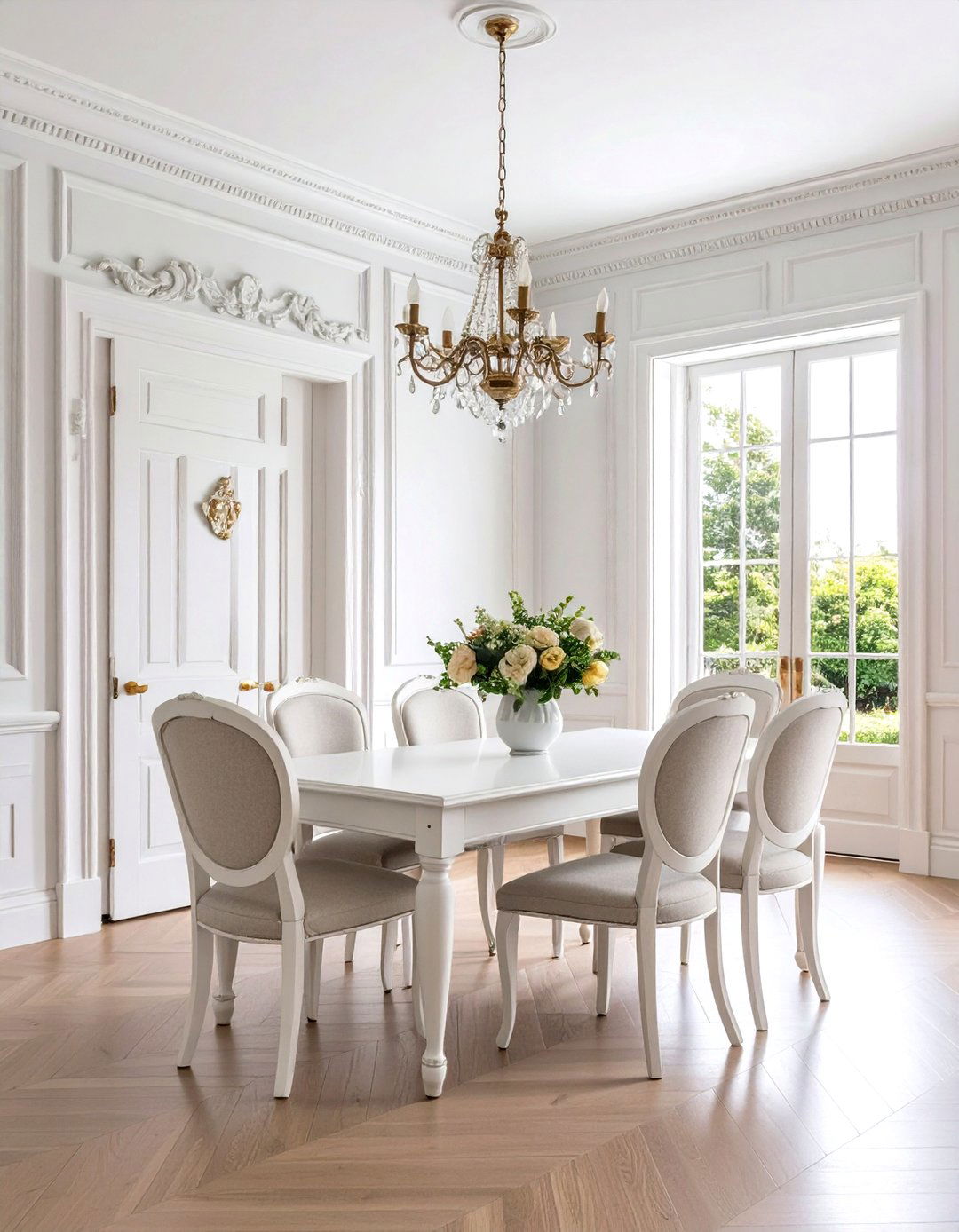
A time-honored colonial door trim uses two slim side casings topped with a wider butted head piece, drawing the eye upward and making ceilings feel taller. The gently stepped profile suits both formal dining rooms and informal halls, concealing wall-to-jamb gaps while adding graceful depth. Opt for finger-jointed pine if you plan to paint or solid poplar if you prefer a natural finish. Mitered corners keep the look crisp; add rosettes only if you want extra ornament. Prime and sand lightly between coats for a glass-smooth surface, and use a semi-gloss enamel that wipes clean after fingertips or pet smudges. Better Homes & Gardens
2. Bold Contrast-Paint Door Trim for Instant Drama

Unlike traditional white casings, contrast-paint door trim harnesses saturated color to frame entries like artwork. Designers recommend sampling darker versions of a wall hue or echoing a wallpaper accent for cohesion. High-quality acrylic trim paint in satin or semi-gloss resists scuffs and spot cleaning. Mask carefully so color doesn’t bleed onto walls, and finish with a fine roller for texture-free results. Because the trim is narrow, you’ll need far less paint than coating a full wall—perfect for trying trendier shades without commitment. This daring edge turns even builder-grade doors into confident focal points in an afternoon. The Spruce
3. Wide Craftsman Flat-Stock Door Trim for Honest Lines
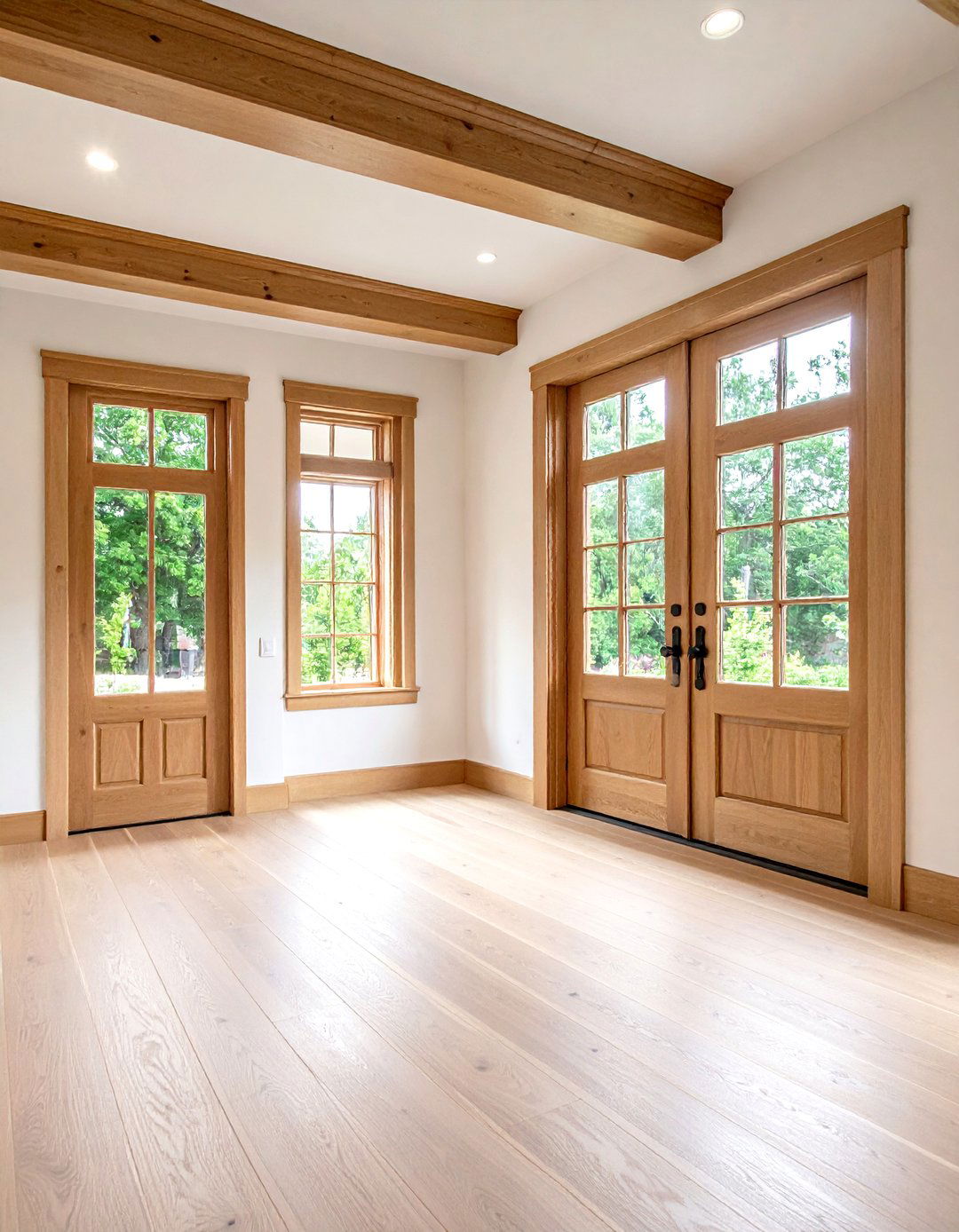
Consider a craftsman-inspired flat-stock door trim when you crave straightforward geometry and a hint of bungalow charm. Use 1×4 or 1×5 boards with square edges, then cap the top with a subtly protruding 1×6 to create a modest header. The heft balances tall walls and hides slight framing irregularities. Leave a uniform ⅛-inch reveal around the jamb for a shadow line that reads custom. Natural white oak or clear pine finished with a matte varnish lets grain play the starring role; painted versions suit modern palettes just as well. The broader boards also cover previous nail holes, simplifying remodels. Better Homes & Gardens Riverside Millwork Group
4. Shadow-Reveal Trimless Doorways for a Gallery-Clean Finish
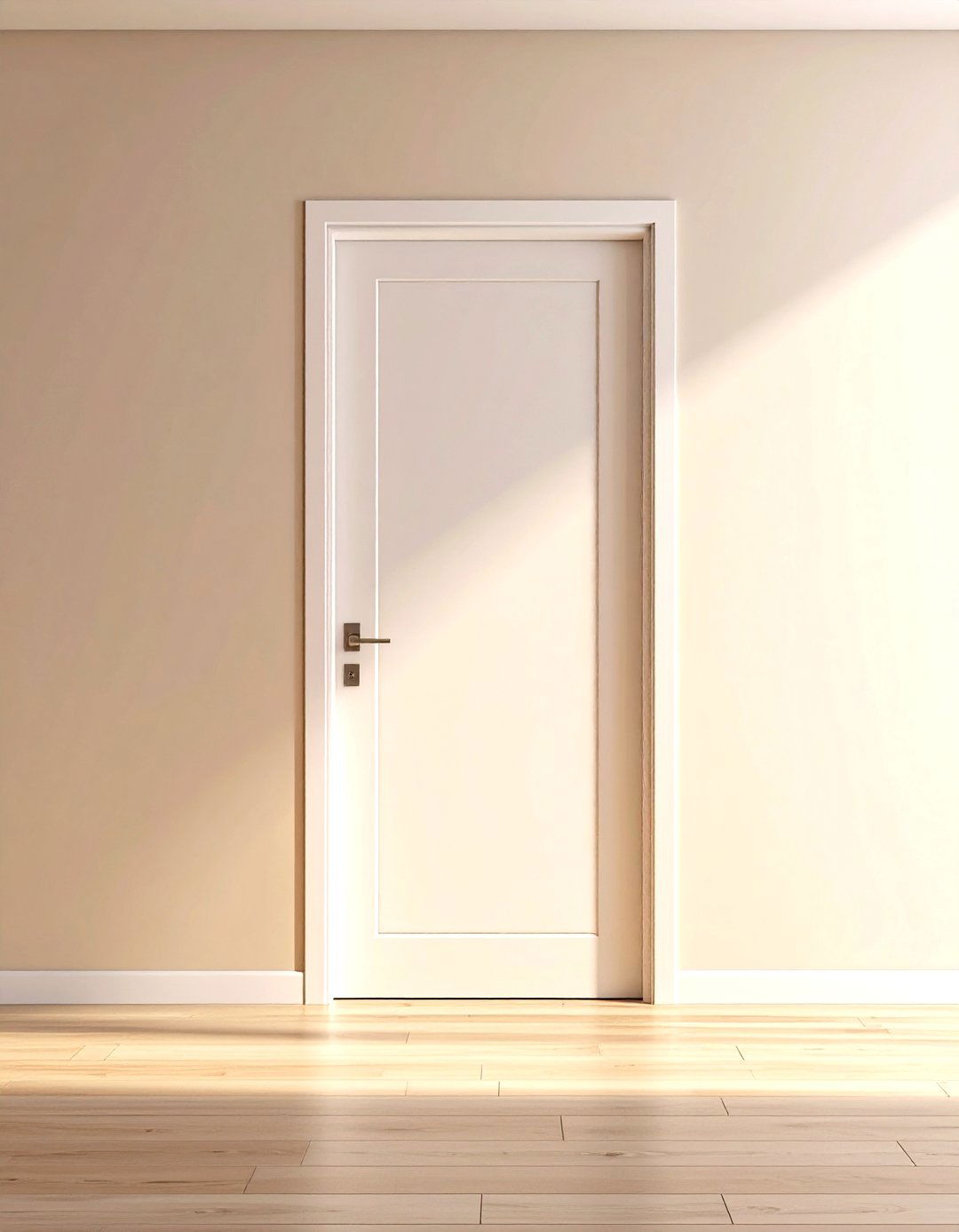
For minimalist interiors, a trimless doorway wrapped with drywall and edged by a metal Z-shadow bead creates an intentional ⅛-inch reveal that doubles as a razor-sharp shadow line. Because no casing protrudes, furniture can sit flush, and visual clutter all but disappears. Installers screw metal drywall beads to the jamb, then mud, sand, and paint flush for an uninterrupted plane. Align stud spacing and plumb the jamb meticulously; sloppy framing telegraphs immediately when there’s no trim to hide gaps. Pair with recessed baseboards for a seamless, art-gallery effect that spotlights form and light over ornament. Trim-Tex
5. Shaker-Style Minimal Door Trim That Ages Gracefully
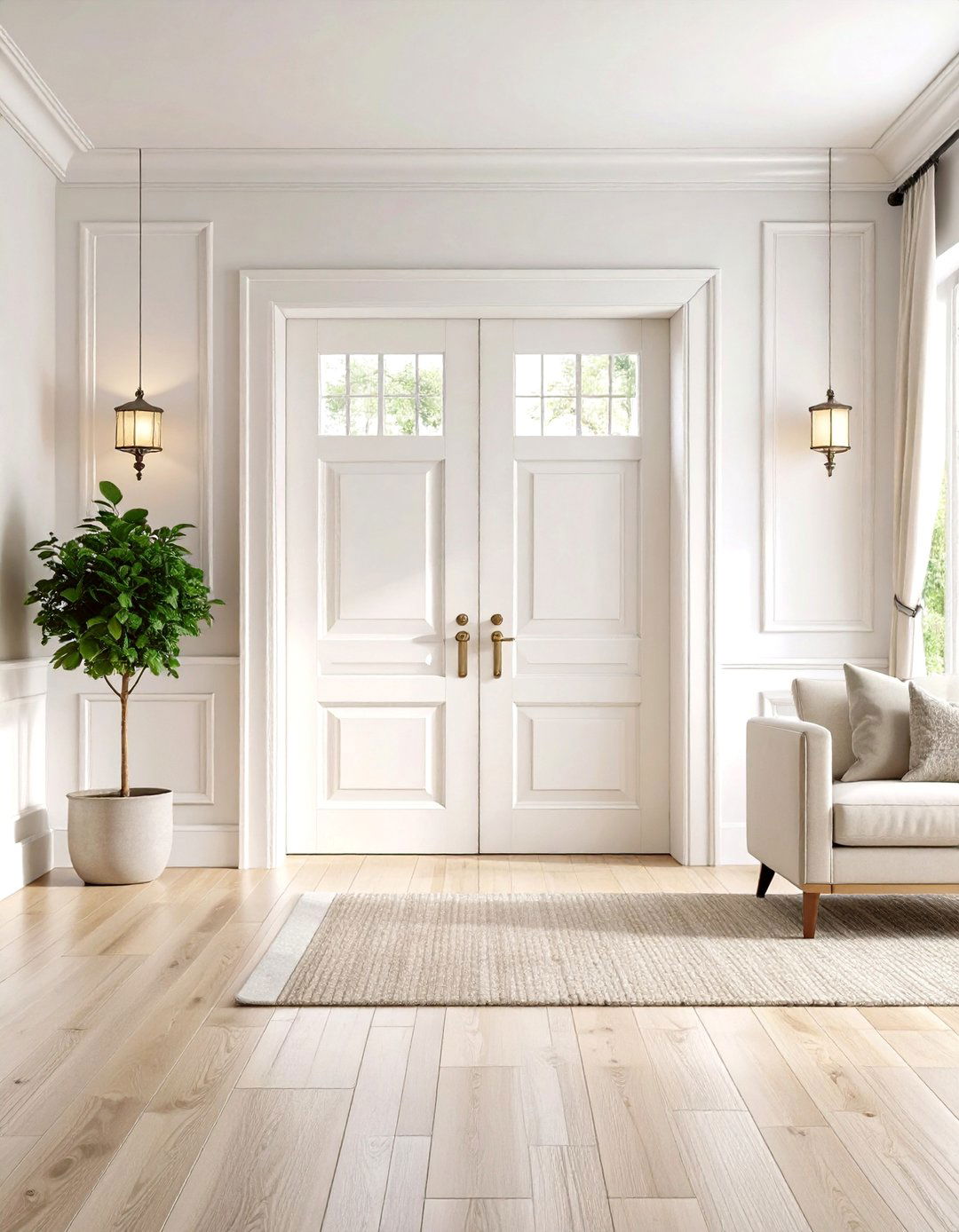
When you crave longevity, Shaker door trim delivers with its flat panels and disciplined proportions. A 1×4 casing set square to a 1×6 baseboard keeps clean lines consistent around the room, while the absence of flutes or beads speeds painting and dusting. Increase board thickness to ⅝-inch MDF for crisper edges, and consider stepping up to 1×5 sides if ceilings exceed nine feet. This trim pairs naturally with Shaker-paneled doors, yet it also balances more ornate furnishings by offering a restful backdrop. A soft white or muted mushroom tone ensures the profile stays relevant for decades.
6. Rustic Reclaimed-Wood Door Trim for Earthy Warmth
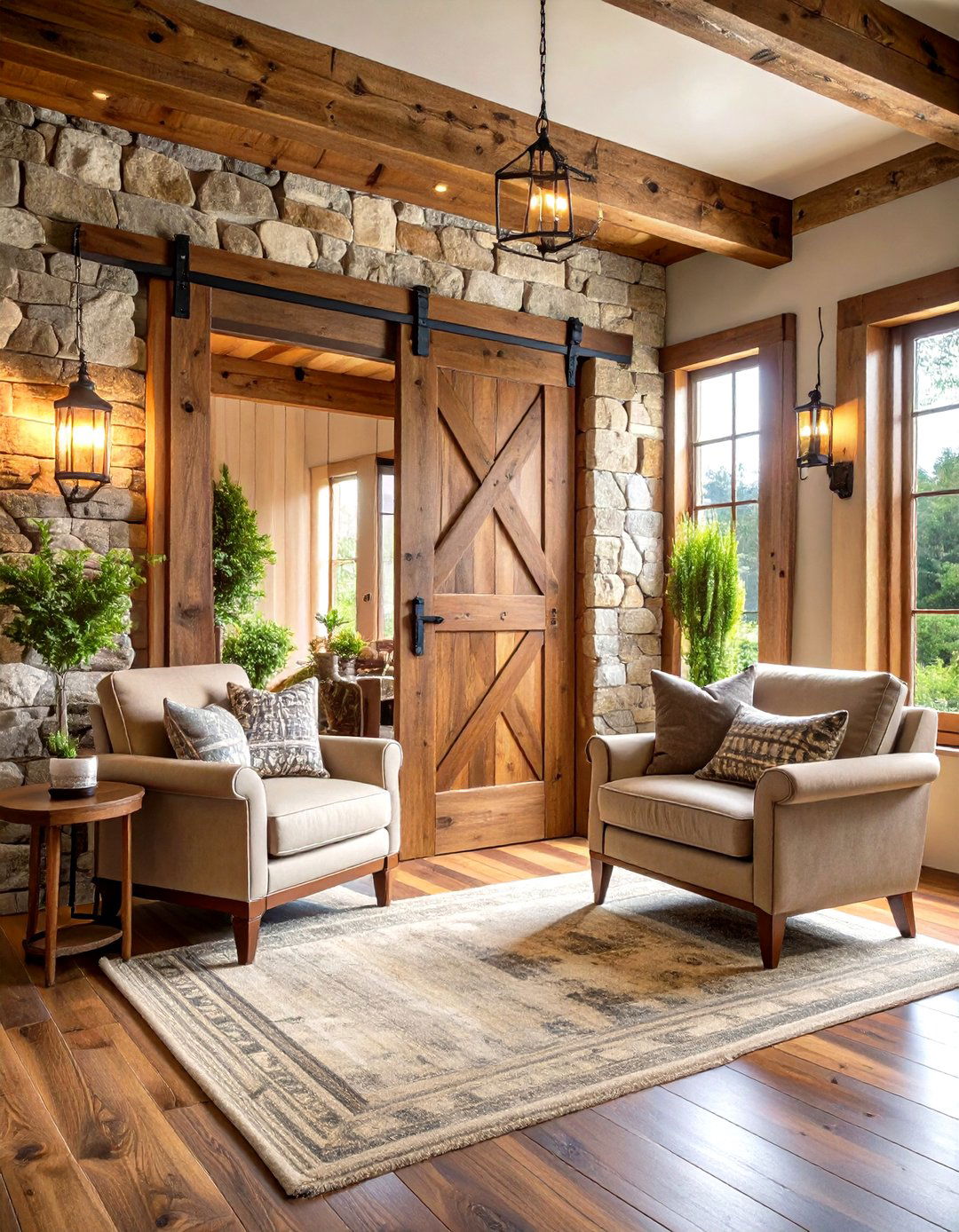
Surprisingly, door trim doesn’t have to match polished floors—rough-sawn barn boards or salvaged beams can wrap a doorway with texture and soul. Lightly wire-brush planks to remove loose fibers while preserving saw marks, then seal with clear matte polyurethane to lock in patina without adding gloss. Because reclaimed wood moves with humidity, predrill nail holes and leave a credit-card expansion gap at the header. The irregular profile plays well with stone fireplaces and shiplap walls, yet it can also soften stark contemporary rooms with a hit of organic character. Better Homes & Gardens
7. Pediment-and-Pilaster Door Trim for Grand Presence
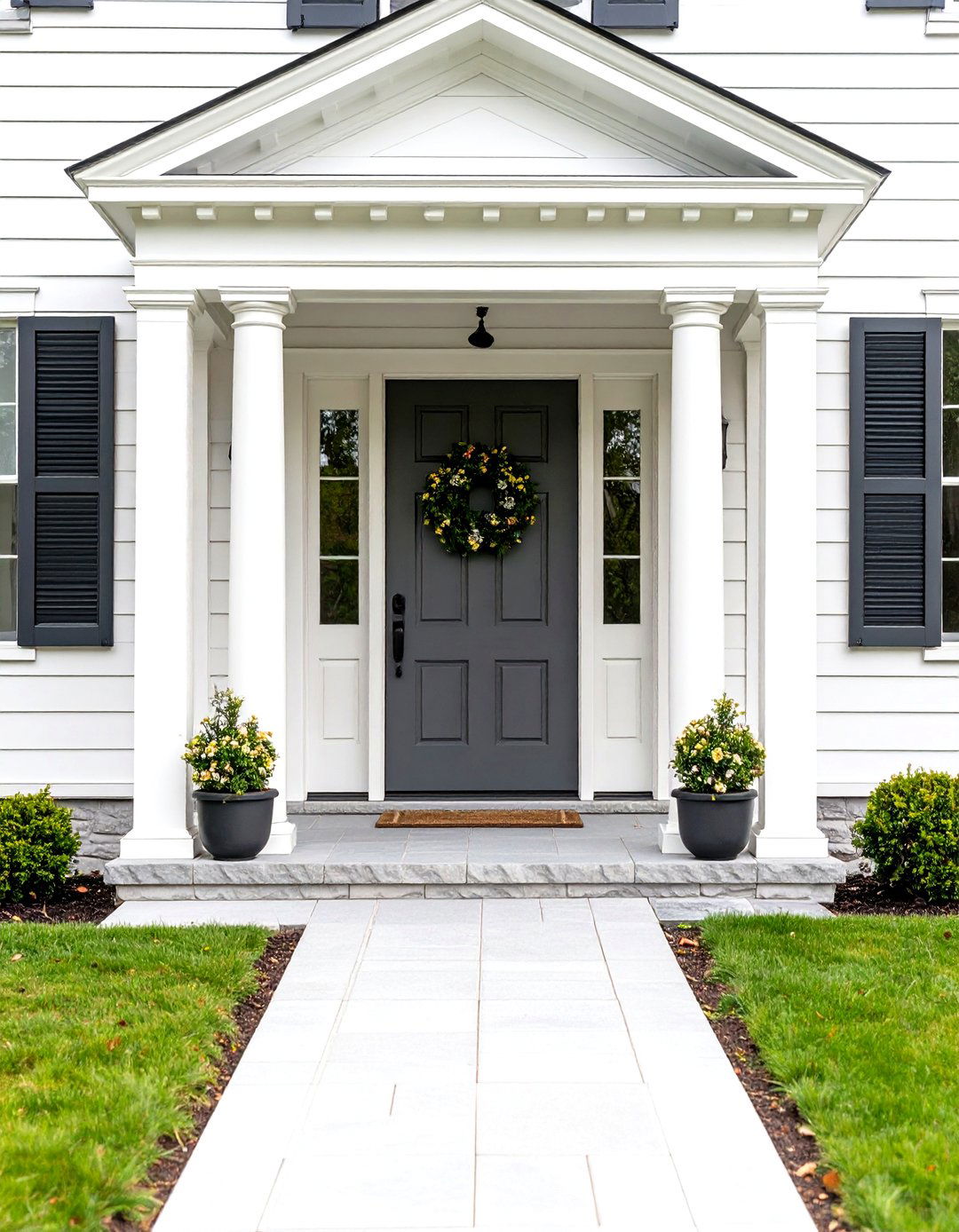
Those seeking classical drama can crown a doorway with a small pediment or entablature supported by fluted pilaster casings. Even in an eight-foot room, a modest over-door shelf edged in cove moulding elevates an entry into architecture. Keep proportions delicate: the pediment should extend no more than one-quarter door width to avoid overpowering the slab. Paint the assembly a crisp white so shadows define the flutes and returns, or choose a toned-down stone gray for a quieter statement. This layered trim beautifully frames French doors, glass transoms, or mirrored inserts in a formal dining space. Better Homes & Gardens
8. Farmhouse Crosshead Door Trim for Cozy Simplicity

Take, for instance, a farmhouse crosshead door trim made from flat 1×4 side casings and a wider 1×6 head board that rests directly atop them, creating a gentle overhang with no miters. The butted joint nods to country carpentry while eliminating tricky angled cuts—a win for DIYers. Stain knotty pine for warmth or paint a soft sage green to echo vintage cabinets. Finish nails anchored into studs keep the heavier header secure. This straightforward trim pairs with barn doors, beadboard wainscoting, and galvanized hardware, bringing understated warmth to mudrooms or casual breakfast nooks. Better Homes & Gardens
9. Black-Accented Contemporary Door Trim for High Contrast
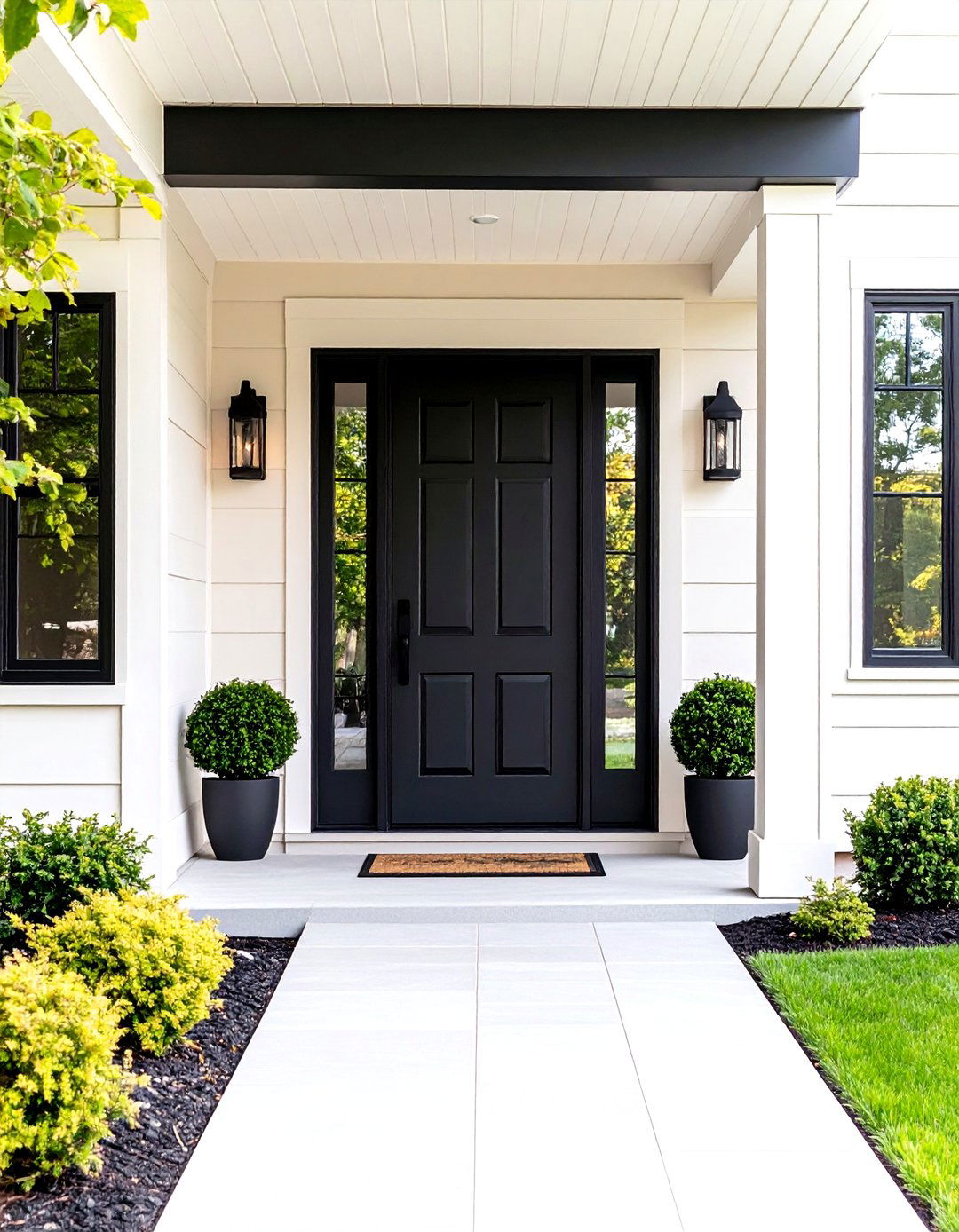
By painting door trim a rich matte black against lighter walls, you create a crisp outline reminiscent of fine gallery frames. Stick to slim, square-edge MDF casing (11/16-inch thick) so the dark hue doesn’t overpower. Sand between coats for a velvety appearance, then pair with black hinges and handles for cohesion. Designers note that keeping at least two additional black accents—like window grilles or picture frames—balances the composition. In open-plan homes, reserve black trim for a single feature wall so adjoining rooms still feel airy. The Spruce
10. Metallic-Edge Door Trim for Industrial Chic

Adding a stainless or brushed-brass backband over standard casing introduces sheen without replacing the entire trim. Self-adhesive metal accent strips bridge tiny inconsistencies and protect edges from luggage dings. Choose a width that leaves a ¼-inch reveal of original trim for layered depth. Because metals reflect ambient light, this upgrade brightens hallways and pairs naturally with modern lever handles. Wipe fingerprints with a microfiber cloth and mild detergent—no polishing required. It’s a smart way to echo kitchen hardware finishes elsewhere in an open-concept layout. The Home Depot
11. Stained Natural-Wood Door Trim for Seamless Flow
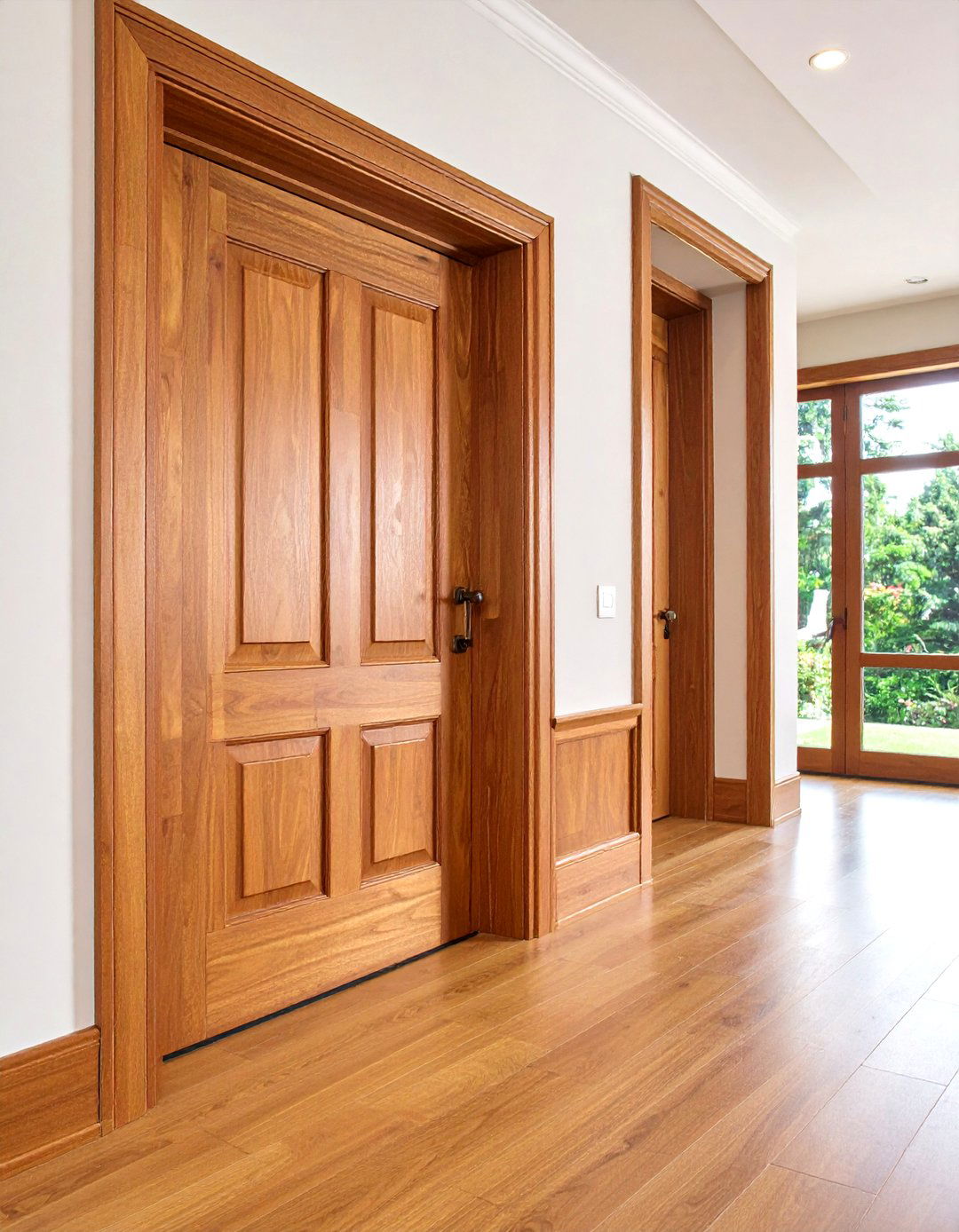
Sometimes the best door trim idea is to match adjacent cabinetry or flooring with a unified wood stain. Select boards from the same species batch to reduce color variation, and apply a conditioner before stain to prevent blotches. A satin clear coat highlights grain while masking minor abrasions better than gloss. To tie the look together, repeat the stain on nearby window casings and baseboards. This tonal cohesion reads intentional and can make compact rooms appear larger by minimizing visual breaks. Better Homes & Gardens
12. Double-Layer Backband Door Trim for Depth on a Budget

Bringing a secondary moulding—called a backband—around flat casing adds shadow lines that suggest pricey custom millwork. Install the primary casing first, then run a slim, stepped backband flush to the wall edge. Paint both pieces after assembly for a monolithic effect, or stain contrasting colors to emphasize layering. Because backband increases overall width, measure door swings carefully so knobs don’t strike adjacent walls. Even a small ½-inch projection injects dimension, perfect for craftsman, colonial, or eclectic interiors. Riverside Millwork Group
13. Geometric Paneled Door Trim for Art-Deco Flair

What if door trim itself became artwork? Create a boxed-panel surround by stacking stepped mouldings into symmetrical rectangles around the jamb. Position the innermost panel 4–6 inches beyond the opening, then nest smaller frames inside, echoing a coffered-ceiling motif. Spray-paint the whole assembly a single hue for unity, or accent the deepest recess with metallic paint for subtle sparkle. Employ a laser level and equal spacing blocks to maintain crisp geometry. This sophisticated frame turns a standard slab into a statement worthy of a boutique hotel corridor. Better Homes & Gardens
14. LED-Integrated Door Trim for Ambient Night Lighting
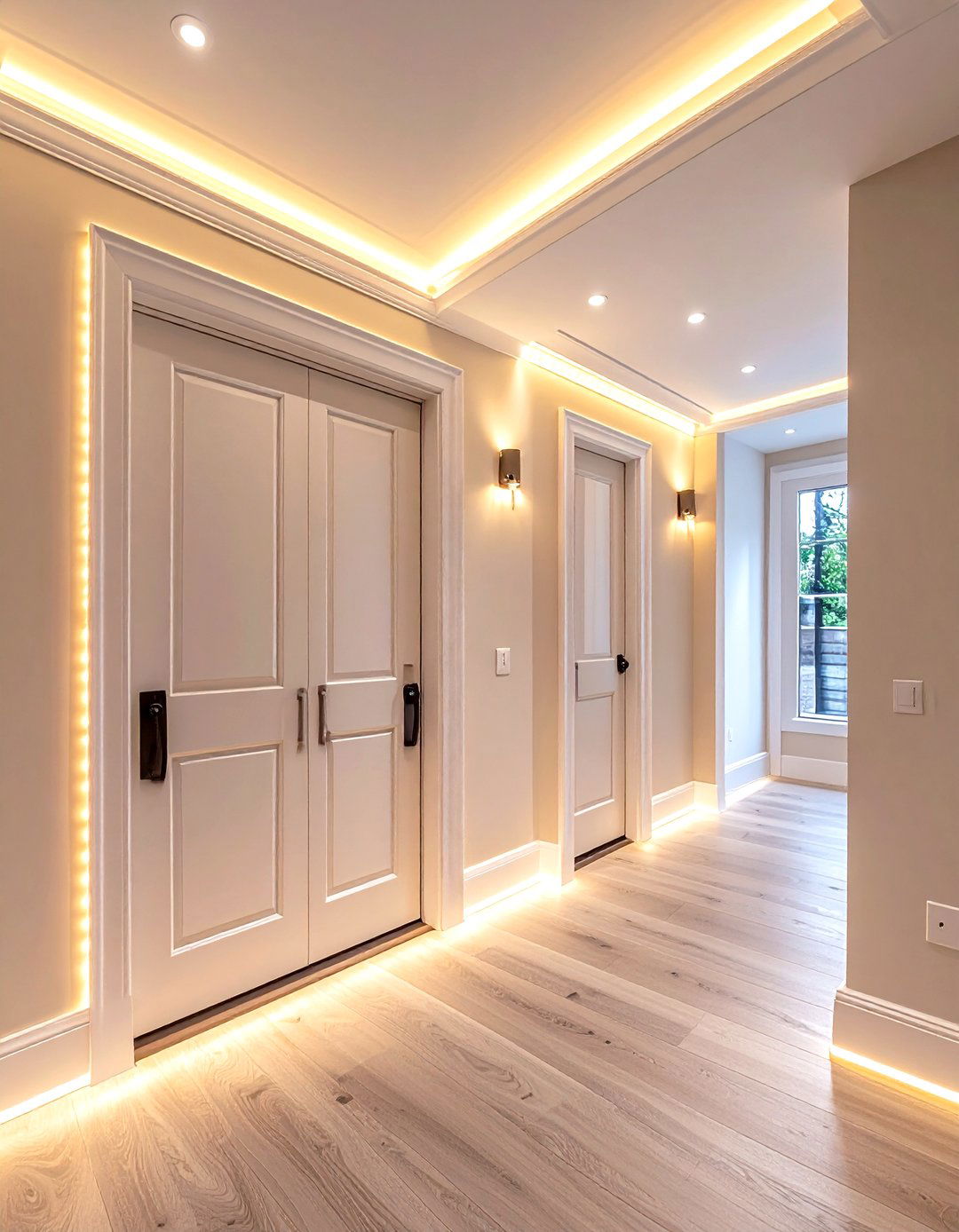
Mount low-profile LED strip channels behind a small cove moulding set ⅜-inch proud of the wall, and you’ll have soft perimeter glow guiding nighttime traffic without ceiling fixtures. Route the wiring up through the jamb cavity, and power it via a smart switch set to 20 percent brightness after dusk. Choose 3000-K warm-white strips for cozy light, and use diffusers to eliminate dot patterns on glossy floors. This solution doubles as courtesy lighting in kids’ rooms or as dramatic hallway up-lighting for parties—all hidden by the trim itself. GreenBuildingAdvisor
15. Arched Door Trim With Transom Accent for Historic Charm
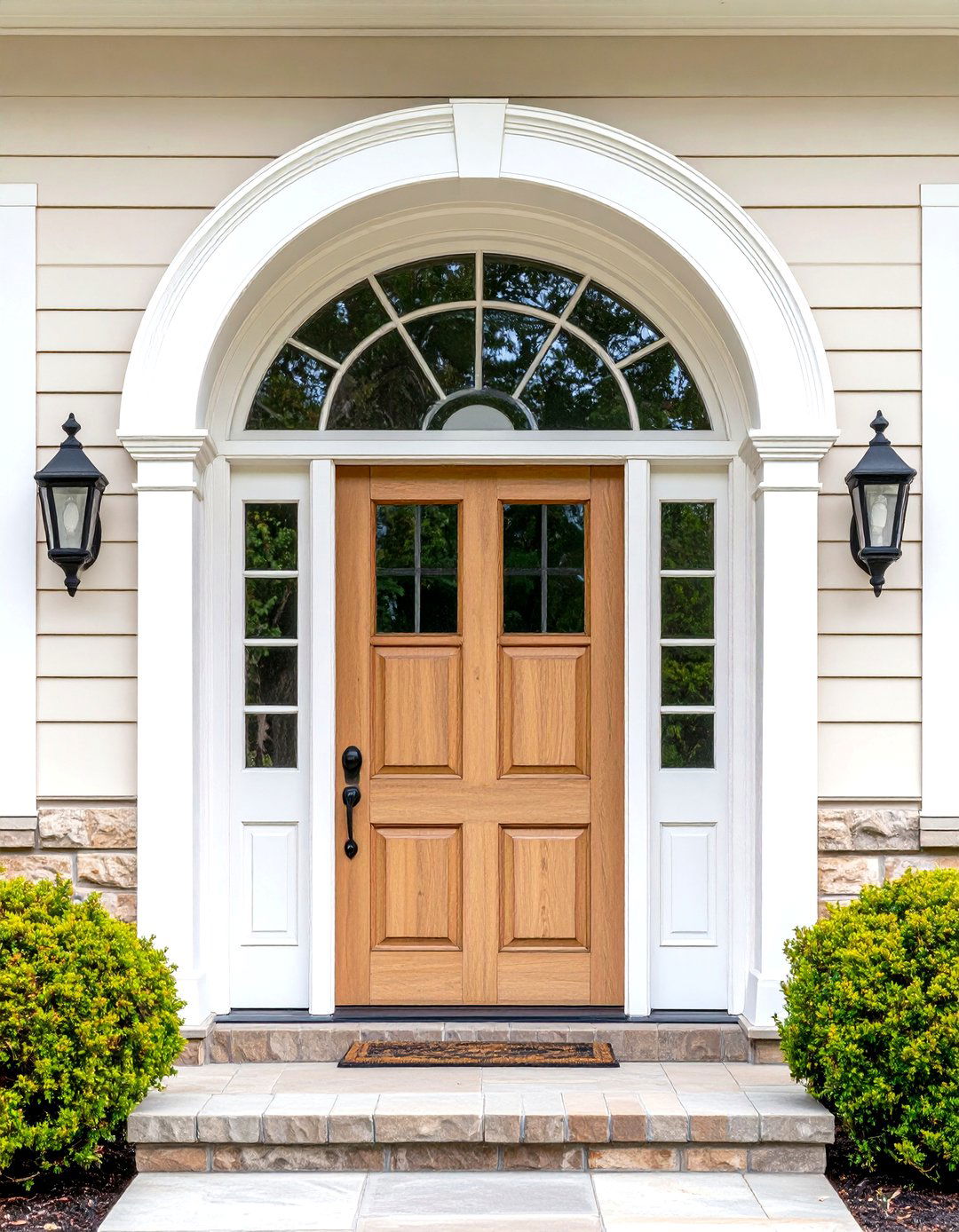
Installing an arched casing that follows a radius above the door softens hard lines and nods to Victorian architecture. Order flexible polyurethane trim if the curve is tight; for gentle sweeps, kerf-cut real wood on the back so it bends cleanly. A matching half-round transom window admits extra daylight, while continuous trim visually links door and glass. Paint both in a bright semi-gloss to bounce light through the archway, or stain rich mahogany for heritage gravitas. Ensure header framing includes a curved plywood template so drywall and trim have solid backing. Better Homes & Gardens
16. Recessed Pocket-Door Trim for Space-Smart Rooms
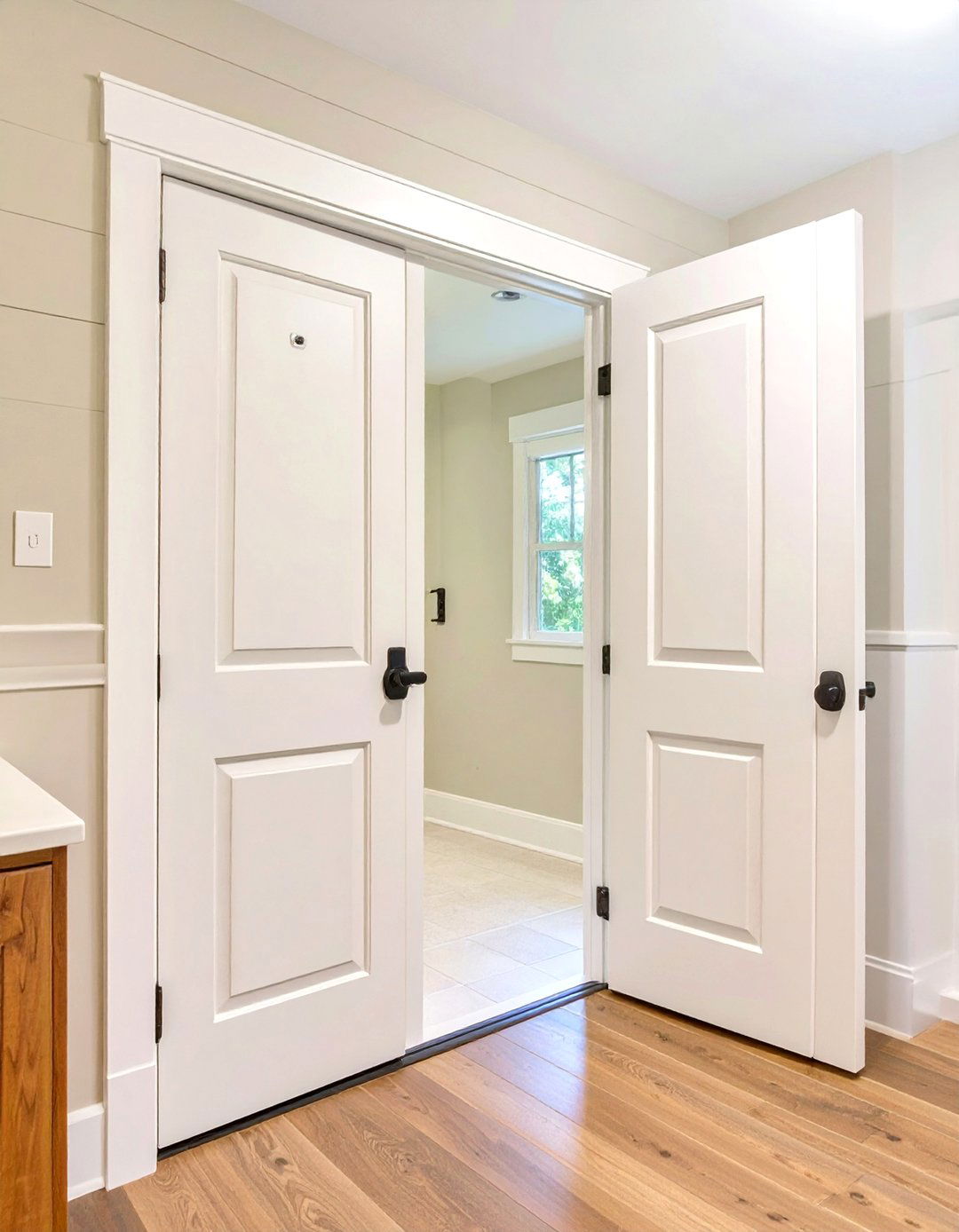
Pocket doors save swing clearance, but casing depth must still bridge wall thickness without binding the door. Use ¾-inch flat stock and a simple mitered return at the jamb edge to keep profiles slender. Before nailing, open the pocket and verify the door clears new trim. A continuous head jamb board hides the track while reinforcing the opening. Calm gaps with painter’s caulk after installation, then sand flush for a seamless reveal. In tiny baths or laundries, this neat trim choice frees precious floor area without sacrificing style. Better Homes & Gardens
17. Budget-Friendly MDF Door Trim That Looks Custom
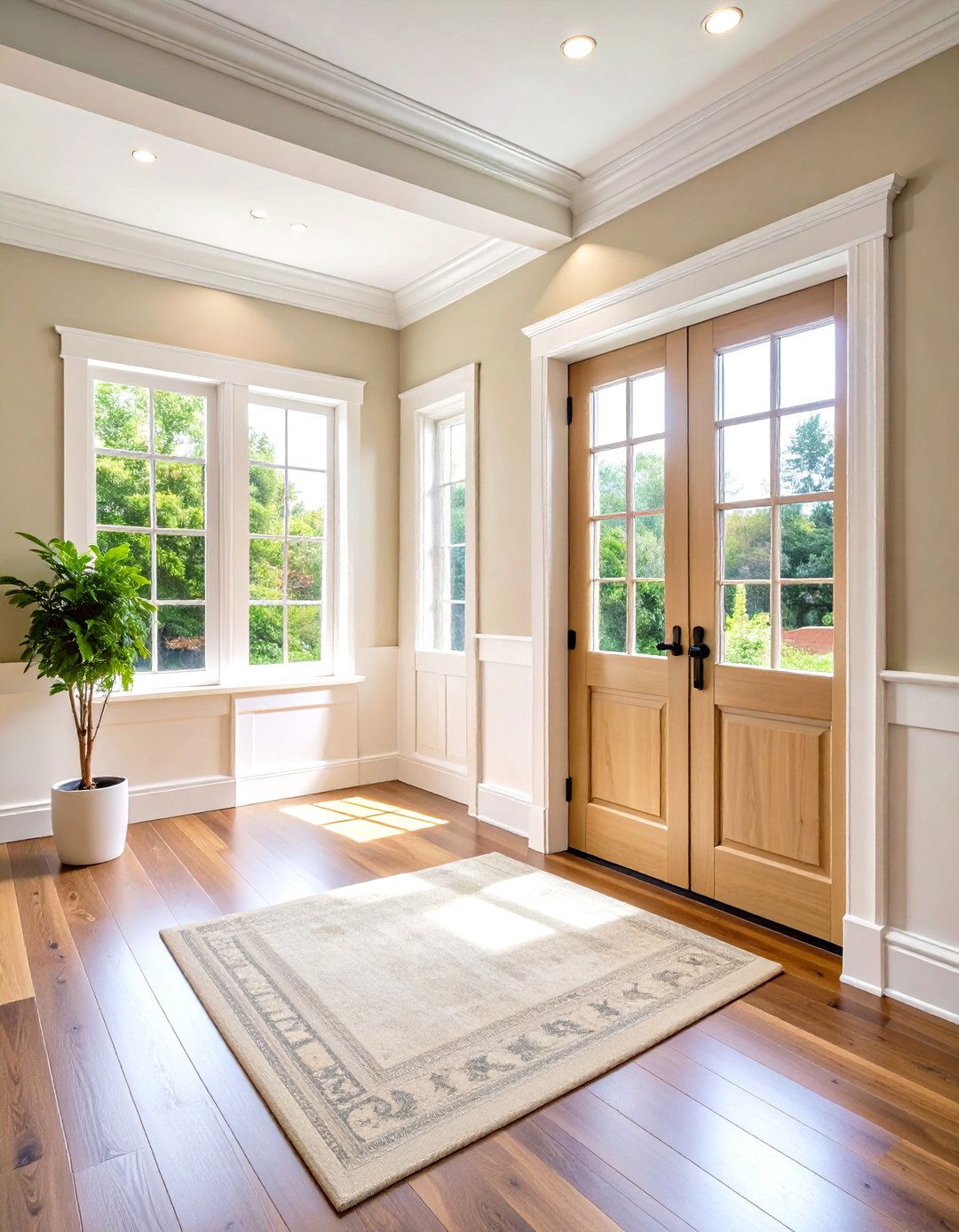
Medium-density fibreboard trim paints to a flawless finish and costs a fraction of solid wood. Choose factory-primed boards to skip one laborious coat, and seal end grains with high-build primer so they don’t drink paint. Because MDF dents more easily than pine, add a polyurethane topcoat in high-traffic zones. Combine a 1×4 flat casing with a 5/16-inch stepped stop moulding inside for a shadow detail that mimics pricier profiles. Even with basic tools, you’ll achieve consistent joints and a professional look for rental refreshes or whole-house remodels on a tight budget. The Home Depot
18. Color-Drenched Door Trim for Monochrome Magic

Owing to the renewed love for expressive hues, designers now “color-drench” rooms—painting walls, trim, and doors the same enveloping shade. Satin or matte enamel keeps surfaces looking velvety rather than glossy. Start with high-quality primer tinted to match your finish coat for better coverage over wood knots. Use a foam roller on the broad faces and a firm sash brush in the crevices to avoid lap marks. Door trim disappears visually, allowing art and furnishings to shine while creating a cocooning atmosphere perfect for reading nooks or bedrooms craving serenity through uniform color.
19. Acoustic-Seal Door Trim for Peace and Quiet
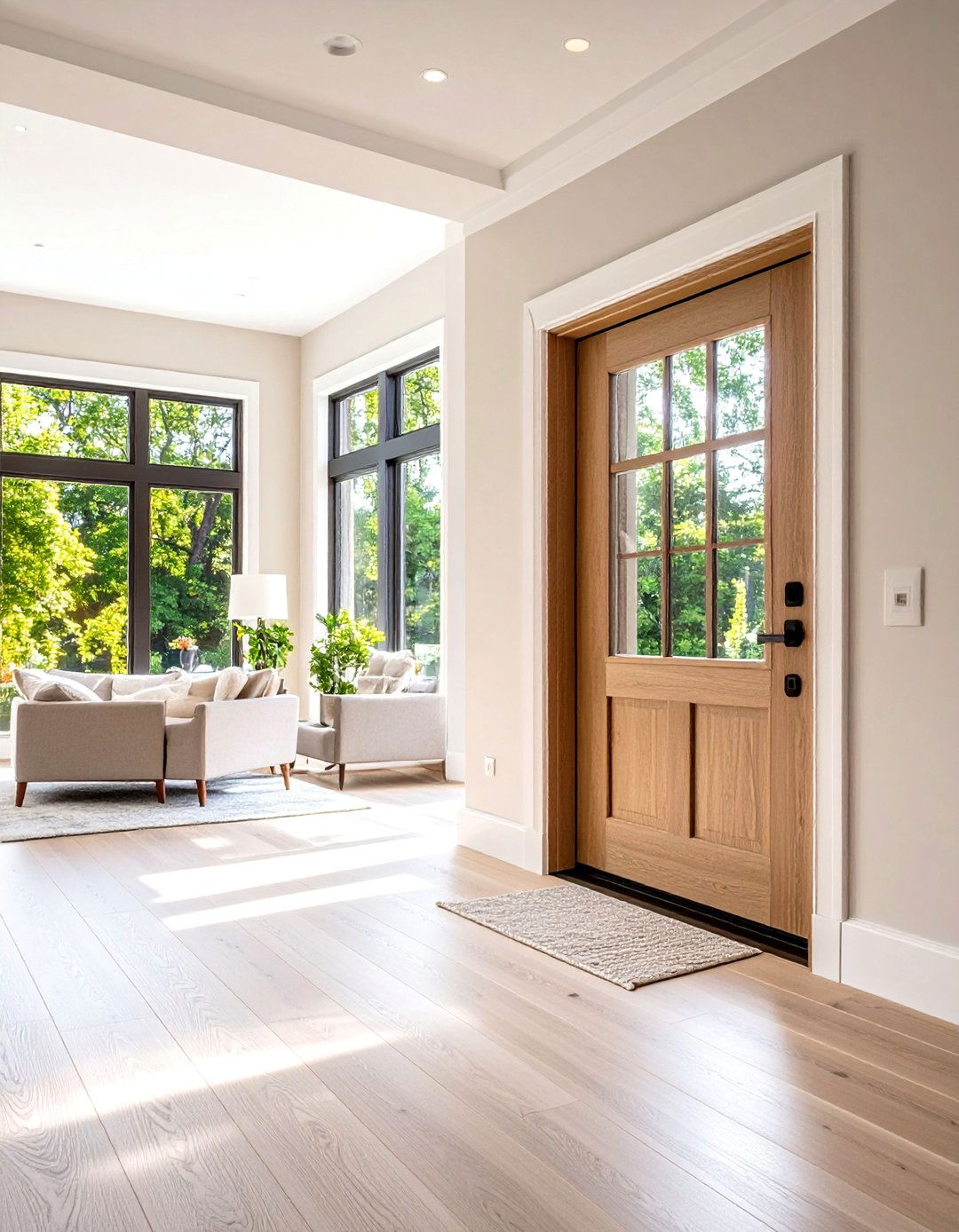
If household noise bleeds between rooms, upgrade door trim with an acoustic seal kit: neoprene gaskets adhere behind the casing, and an automatic drop sweep seals the gap below. The key is airtightness—sound sneaks through even pin-size openings. Measure jambs, cut gasket strips square, and compress them lightly against the closed door before fastening the trim. Combine with solid-core doors for best results, and you may gain 3–5 dB of sound reduction—enough to muffle TVs or practice instruments. This stealthy improvement hides entirely behind the trim, preserving aesthetics.
20. Smart-Sensor-Ready Door Trim for Connected Living
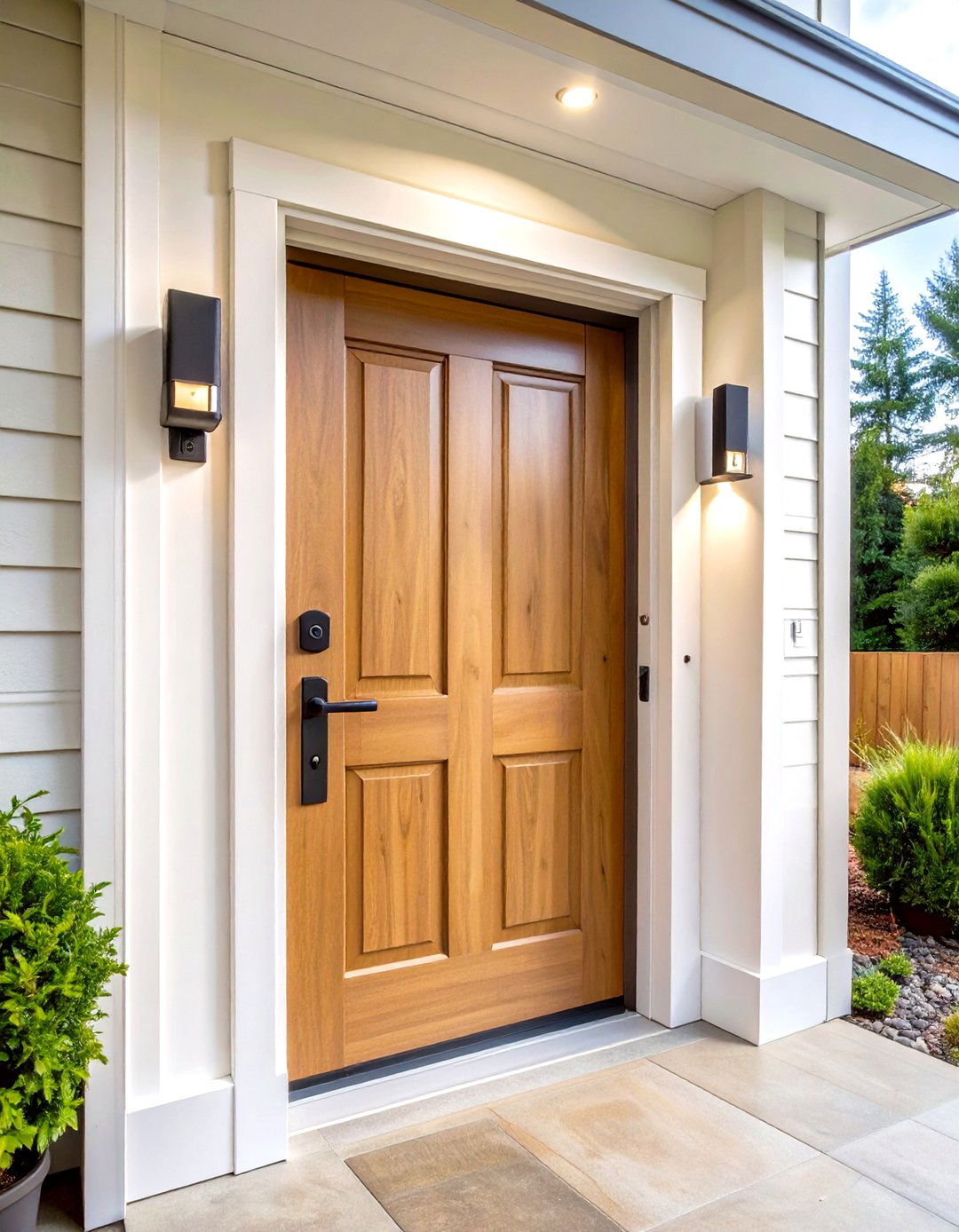
Finally, prepare for the future by embedding a recessed contact sensor into the door jamb before installing trim. Drill a discreet ¾-inch hole for the magnet and sensor body, then conceal wiring—or a slim battery unit—behind the casing. Pair it with a Matter-compatible smart lock for real-time status updates, auto-lighting triggers, and security alerts without clunky surface hardware. Flush sensors also eliminate accidental bumps that can misalign standard stick-on magnets, keeping the trim’s profile pristine while quietly adding intelligence to your home. Wired
Conclusion:
Door trim may seem like mere finishing detail, yet it sets the tone for every threshold you cross. From colonial profiles that stretch ceilings to trimless reveals that celebrate modern minimalism, each idea above proves that well-chosen casing can solve practical problems and spark fresh style. Whether your next step is a weekend DIY paint update or a full millwork makeover, let your door trim be the confident frame that declares your home’s personality—one perfectly tailored line at a time.






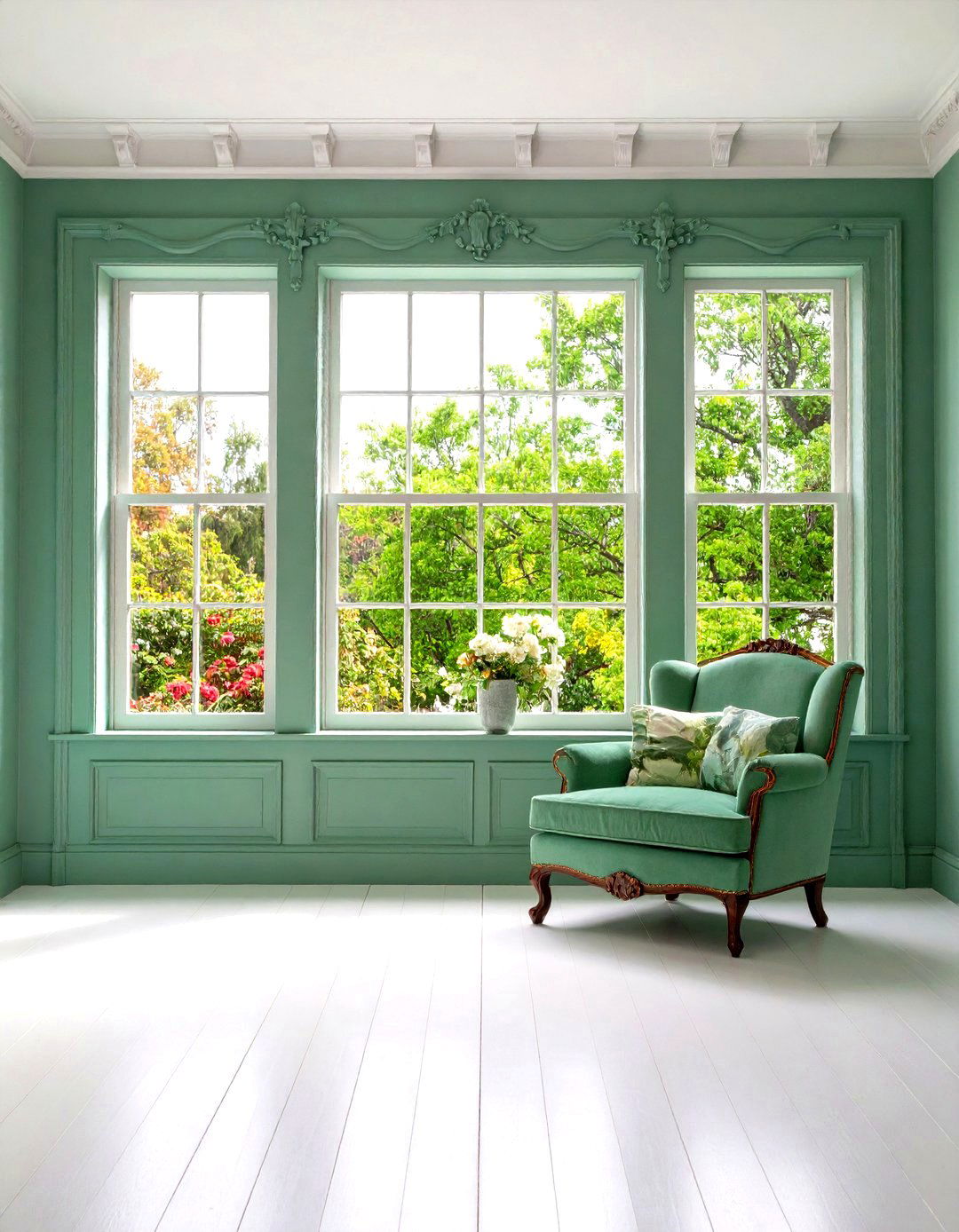
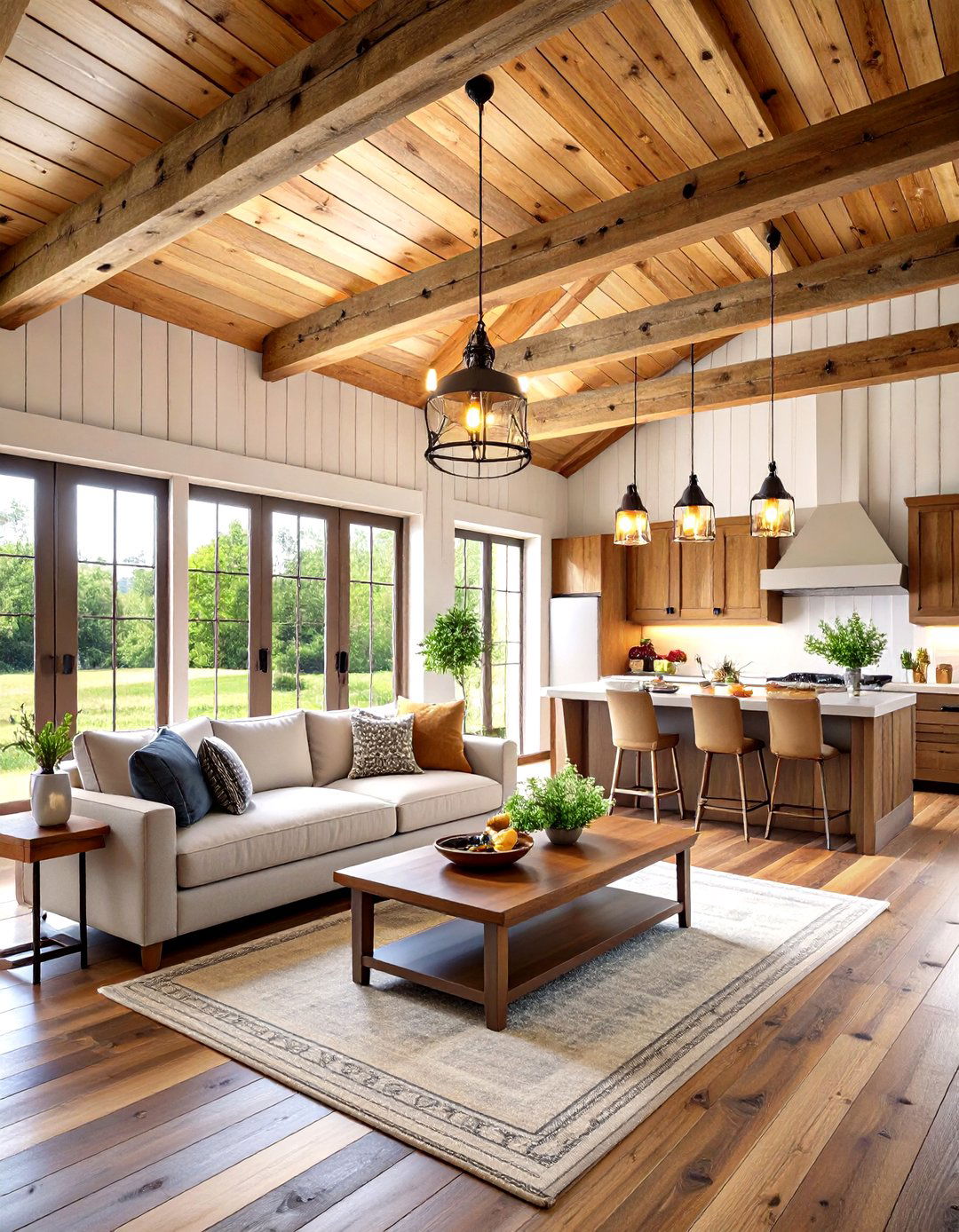

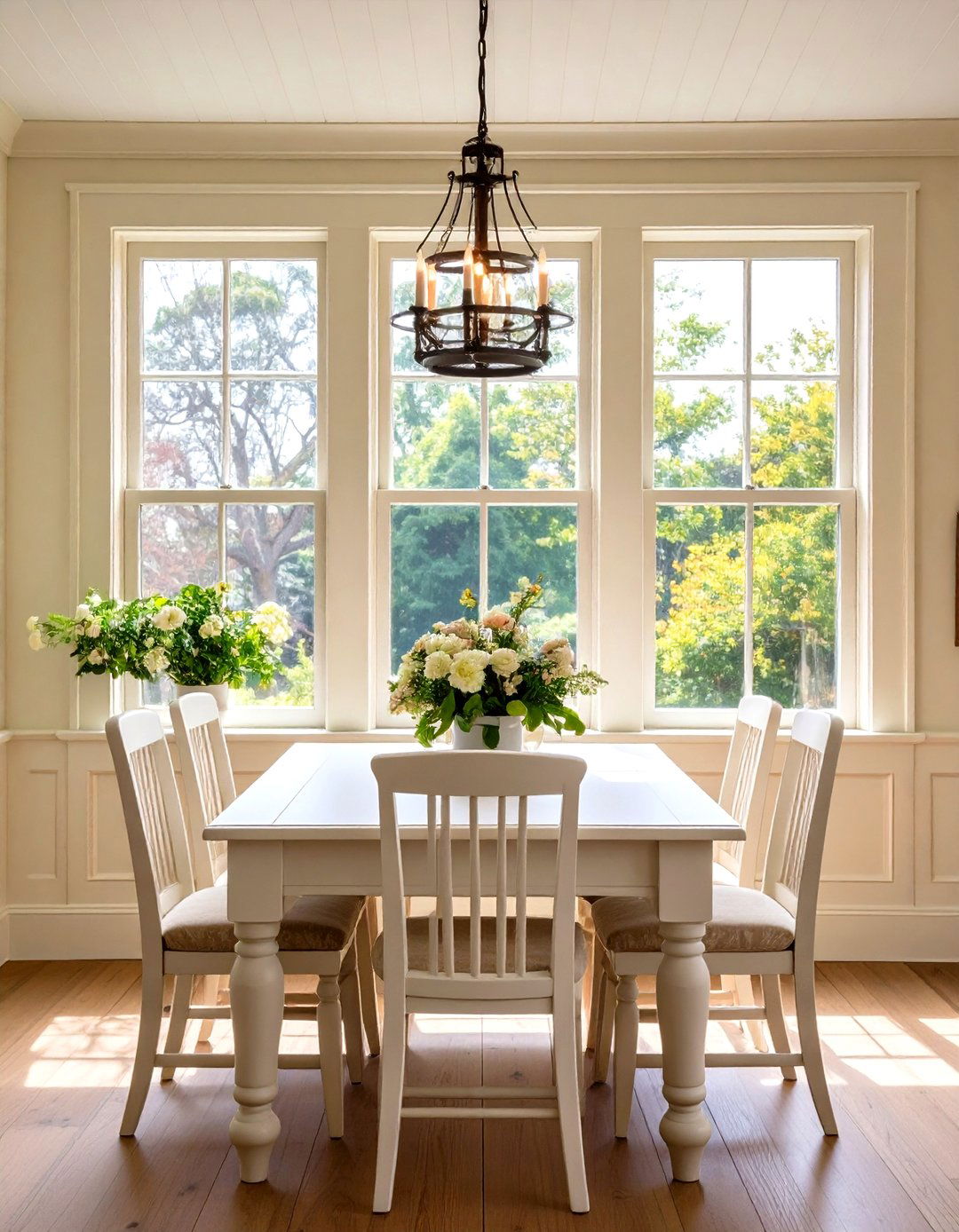

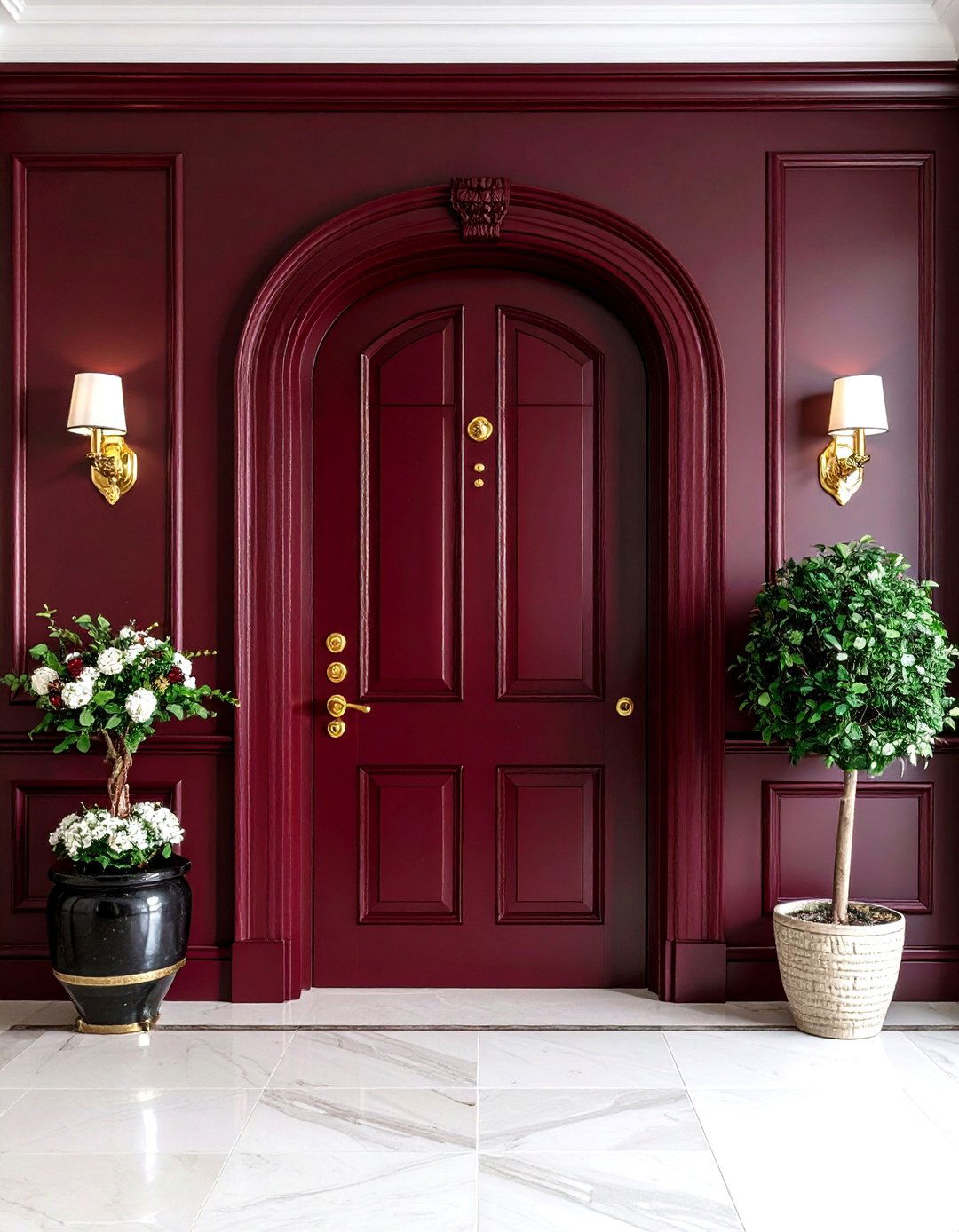
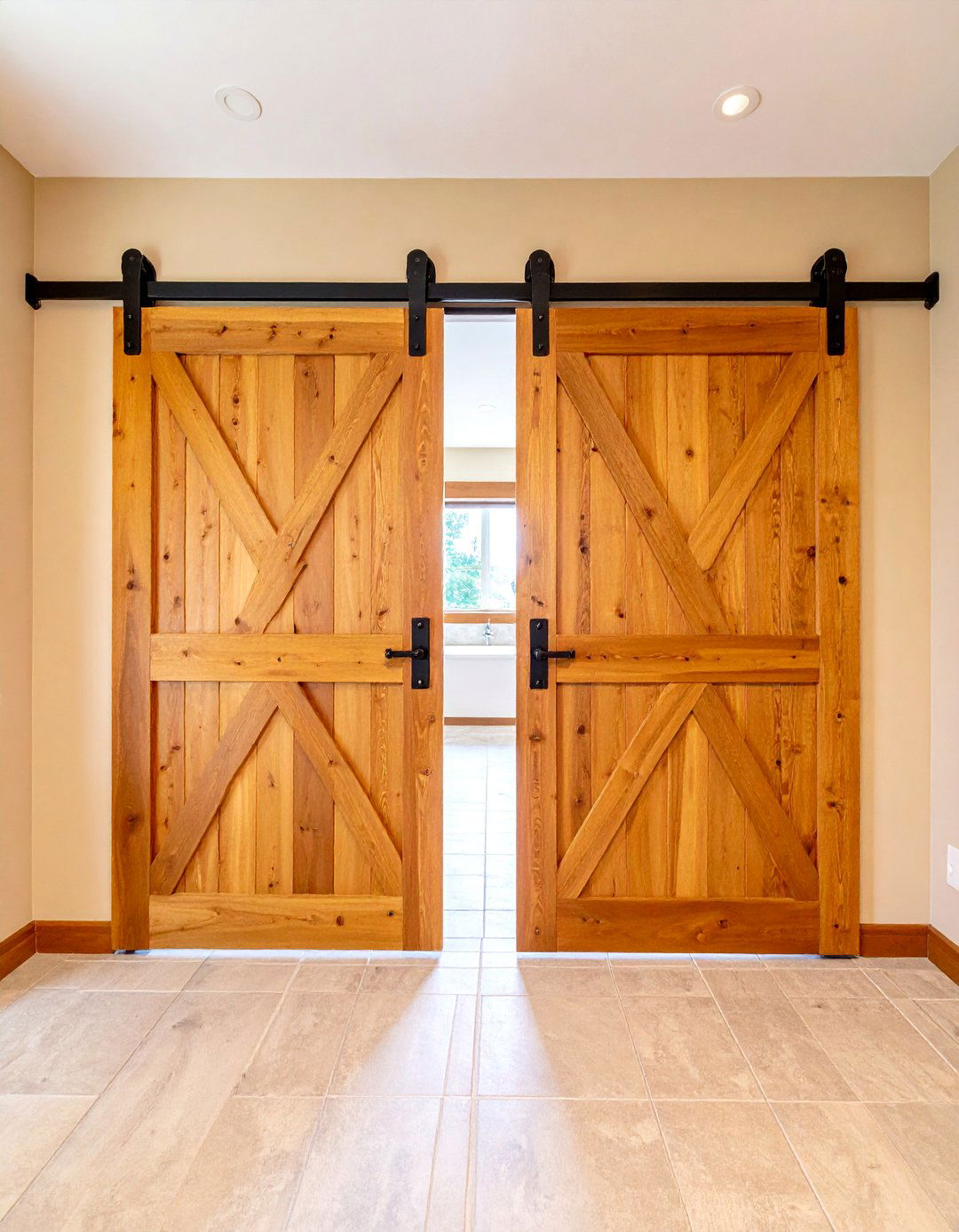
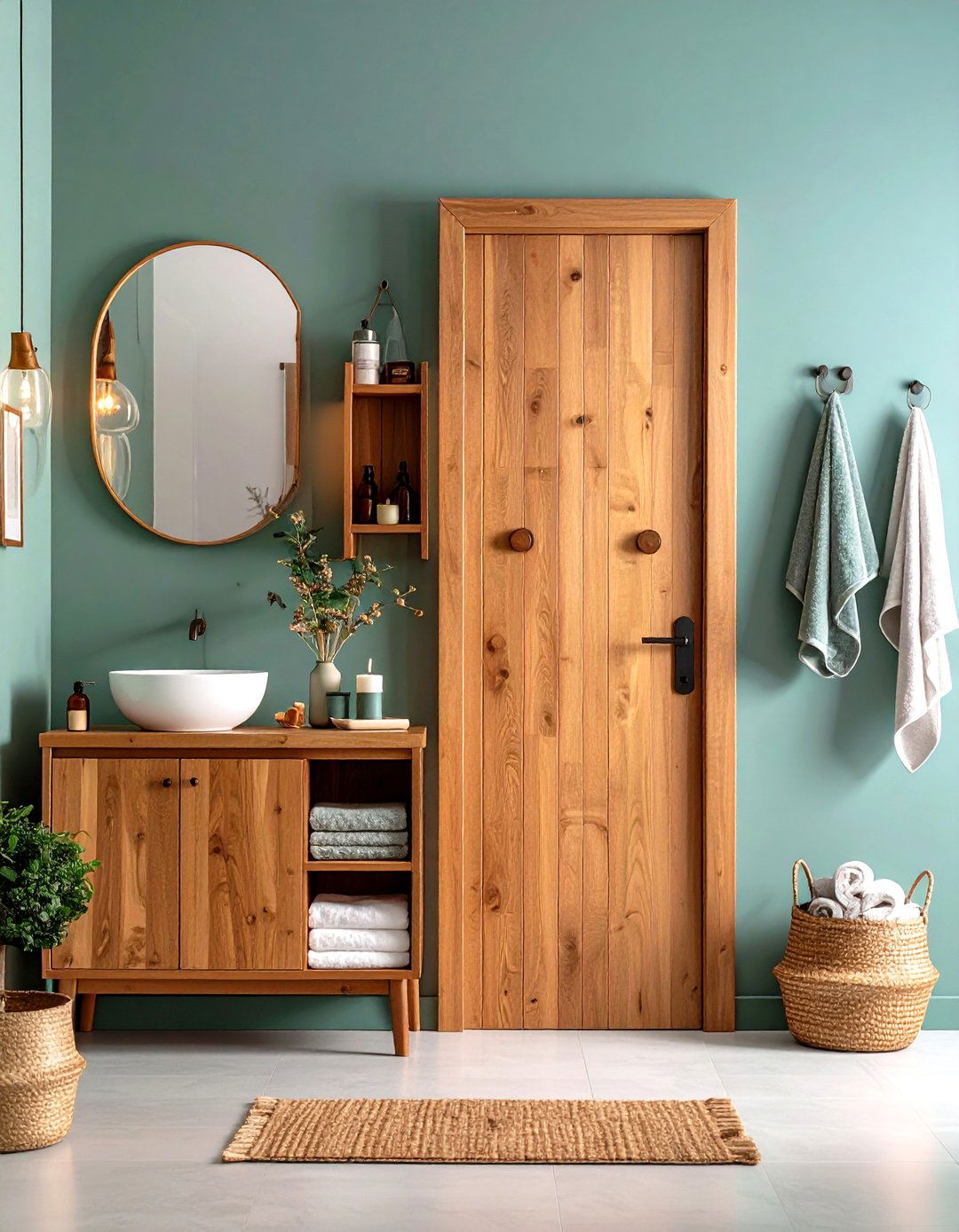
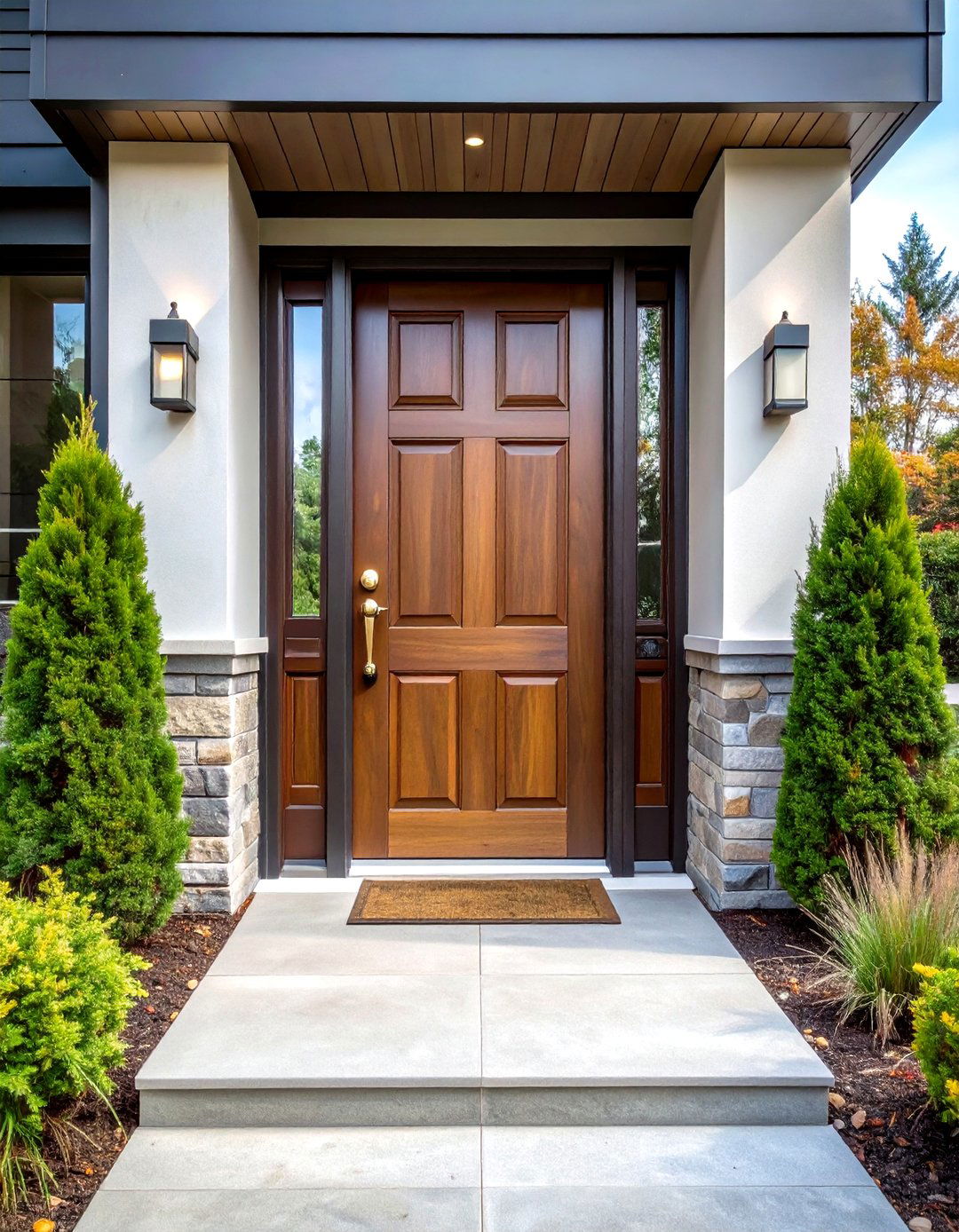


Leave a Reply